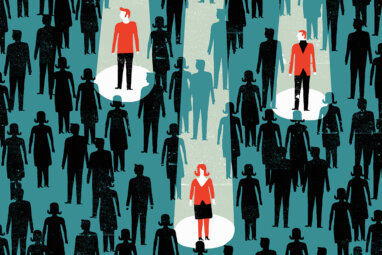Are Your Team Members Lonely?
Despite the prevalence of team-based collaboration in the workplace, many employees feel isolated on the job.

Image courtesy of Gary Waters/theispot.com
While loneliness is often thought of as a personal issue, it is an organizational issue as well. A lack of social connection — whether with friends, family members, or coworkers — can have serious consequences. It is associated not only with health problems,1 including heart disease, dementia, and cancer, but also with poor work performance, reduced creativity, and flawed decision-making.2 Quite simply, people who feel lonely cannot do their best work, which means that teams with lonely members are not operating at their peak levels either.
You might think that working on a team would stave off loneliness by fostering a sense of community and camaraderie. But in our research, we have found that the composition, duration, and staffing of teams can trigger or exacerbate feelings of social disconnection in the workplace. Therefore, we caution managers to view loneliness as a systemic and structural problem that may require a new approach to teamwork.
Team Members Are Feeling Isolated
To explore the relationship between the way teams are designed and loneliness, we have undertaken two research studies involving nearly 500 global executives and informal interviews with many other managers through our executive education and consulting work. In our first survey study of 223 executives, conducted in December 2019 and January 2020, we found that, even prior to the major shift to working from home and social distancing brought on by the COVID-19 pandemic, people were struggling with feelings of social isolation at work.
References (15)
1. E. Carson, “How Loneliness Could Be Changing Your Brain and Body,” CNET, June 15, 2020, www.cnet.com; J. Holt-Lunstad, T.B. Smith, and J.B. Layton, “Social Relationships and Mortality Risk: A Meta-analytic Review,” PLoS Medicine 7, no. 7 (July 2010) doi: 10.1371/journal.pmed.1000316; V. Murthy, “Work and the Loneliness Epidemic,” Harvard Business Review, The Big Idea (September 2017): 3-7; and S. Cacioppo, A.J. Grippo, S. London, et al., “Loneliness: Clinical Import and Interventions,” Perspectives on Psychological Science 10, no. 2 (March 2015): 238-249.
2. H. Ozcelik and S.G. Barsade, “No Employee an Island: Workplace Loneliness and Job Performance,” Academy of Management Journal 61, no. 6 (December 2018): 2343-2366.





Comment (1)
Guy Enemare